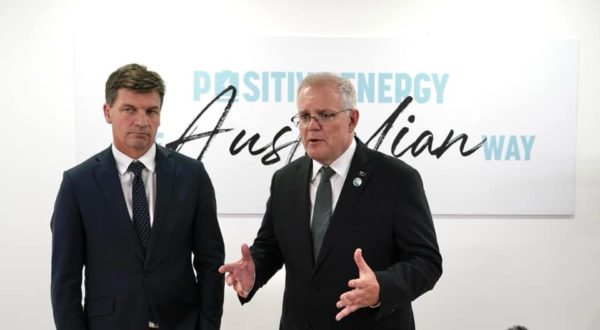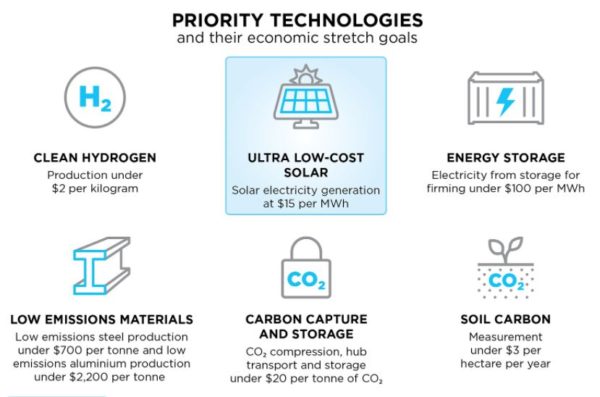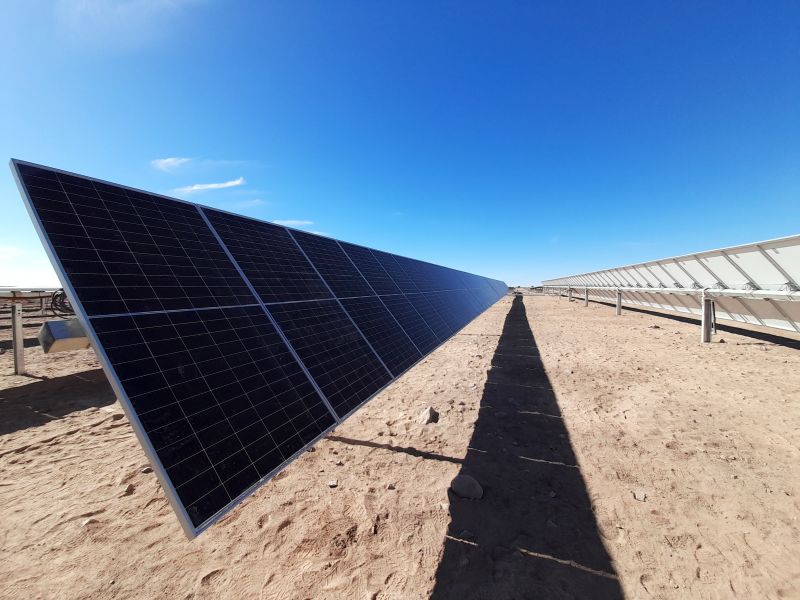Having committed to net-zero emissions by 2050, the federal government has identified low-cost solar as key to achieving the target, adding it as a new priority technology in its updated Technology Investment Roadmap.
Details of the $15/MWh target for solar PV have been outlined in the latest update of the government’s Technology Investment Roadmap, with the Low Emissions Technology Statement 2021 (LETS 2021) released earlier this week.
Energy Minister Angus Taylor said the updated statement expands the priorities set out in the first edition which was released in September last year, adding ultra low-cost solar as a new priority technology for investment. This includes an economic stretch goal of solar PV generation at $15/ MWh.
“Getting solar power down to less than $15 per megawatt hour, around a third of today’s cost, will be critical to reducing electricity sector emissions, but also in unlocking the potential of other low-emissions technologies like clean hydrogen,” he said.
“We see much greater potential for cost reductions in solar power than other sources of renewables.
“And Australia is blessed with an incredible landmass and the highest solar irradiation of any continent.
“If we can get this right and achieve this goal, we will not only be helping to achieve the other stretch goals, we’ll be positioning ourselves for an advantage in low-cost, bulk electricity supply.”

Image: Facebook
To be led by the Australian Renewable Energy Agency (ARENA), the ultra low-cost solar initiative aims for solar PV to achieve 30% efficiency at 30 cents per installed watt by 2030.
John Quiggin, from The University of Queensland’s School of Economics, said the government’s $15/MWh target translates to 1.5 cents per kWh, a fraction of the 20 to 30c/kWh currently being paid by Australian households.
But he suggested the stretch goal is attainable, saying long-term solar power supply contracts in many countries are already being settled at prices of less than $0.02c/kWh and prices are continuing to fall.
Ultra low-cost solar PV is also seen as key to meeting the stretch goals for the existing priority technologies identified in last year’s statement, including clean hydrogen, low-emissions steel and aluminium, and electrical energy for storage for firming.
Other priorities identified in last year’s statement are carbon capture and storage and soil carbon measurement.
LETS 2021 also highlights the enabling infrastructure needed to deploy low-emissions technologies at a commercial scale, with the first two infrastructure priorities being battery charging and hydrogen refuelling stations for electric vehicles (EV) and a developing a digital grid with enhanced management systems and capabilities to support rapid growth in solar and wind generation.
Taylor said the government has announced $1.7 billion to fund the actions outlined in LETS 2021. This includes $565 million for low-emissions technology partnerships with other countries.
“Over the next decade, we will invest at least $20 billion investment in low-emissions technology, which is expected to unlock at least $80 billion and up to $120 billion of combined public and private investment,” he said.

Other aims in the statement include getting clean hydrogen production under $2/kg, achieving carbon capture and storage at $20/tonne CO2, and reducing the cost of low-emissions steel production to under $700/tonne and aluminium to under $2200/tonne.
The hydrogen sector would be boosted through investment in seven industrial hubs and a voluntary zero-emissions gas market.
“Our goal is to drive down the cost of a portfolio of low-emissions technologies, because getting them to commercial parity with existing approaches will make them more attractive,” Taylor said.
Technology Investment Advisory Council chair Alan Finkel said the updated statement is an investment strategy, designed to accelerate the development and deployment of new and emerging low-emissions technologies and has the potential to pave the way for net zero emissions by 2050.
“LETS 2021 represents the second important milestone in the development of a roadmap to guide our path toward this target,” he said.
“It underscores the importance of research and development, regulations, community engagement, voluntary action and efficient operation of markets. It introduces new policy initiatives, adds ultra low-cost solar as a priority technology in recognition of the contribution clean electricity makes to the success of the other priority technologies, and provides a new focus on enabling infrastructure that is essential to curbing emissions across the electricity and transport sectors.”
This content is protected by copyright and may not be reused. If you want to cooperate with us and would like to reuse some of our content, please contact: editors@pv-magazine.com.









By submitting this form you agree to pv magazine using your data for the purposes of publishing your comment.
Your personal data will only be disclosed or otherwise transmitted to third parties for the purposes of spam filtering or if this is necessary for technical maintenance of the website. Any other transfer to third parties will not take place unless this is justified on the basis of applicable data protection regulations or if pv magazine is legally obliged to do so.
You may revoke this consent at any time with effect for the future, in which case your personal data will be deleted immediately. Otherwise, your data will be deleted if pv magazine has processed your request or the purpose of data storage is fulfilled.
Further information on data privacy can be found in our Data Protection Policy.